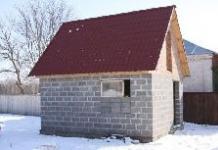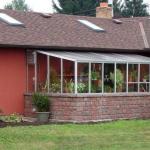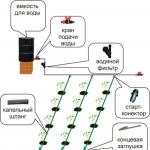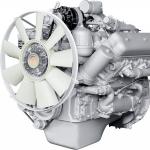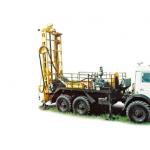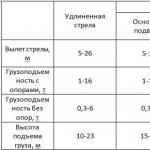Build solar heating a private house with your own hands - not so difficult task as it seems to the uninformed layman. This will require the skills of a welder and materials available at any hardware store.
The relevance of creating solar heating for a private house with your own hands
To get full autonomy is the dream of every owner who starts private construction. But is solar energy really capable of heating a residential building, especially if the device for its accumulation is assembled in a garage?
Depending on the region, the solar flux can give from 50 W/sq.m on a cloudy day to 1400 W/sq.m in a clear summer sky. With such indicators, even a primitive collector with low efficiency (45-50%) and an area of 15 sq.m. can produce about 7000-10000 kWh per year. And this saved 3 tons of firewood for a solid fuel boiler!
- on average for square meter devices accounted for 900 watts;
- to raise the temperature of the water, it is necessary to spend 1.16 W;
- taking into account also the heat loss of the collector, 1 sq.m will be able to heat about 10 liters of water per hour to a temperature of 70 degrees;
- to provide 50 liters of hot water needed by one person, you will need to spend 3.48 kW;
- having consulted the data of the hydrometeorological center on the power solar radiation(W / sq.m) in the region, it is necessary to divide 3480 W by the resulting solar radiation power - this will be the required area solar collector for heating 50 liters of water.
As it becomes clear, effective heating system it is rather problematic to implement it exclusively with the use of solar energy. After all, in the gloomy winter season there is very little solar radiation, and to place a collector with an area of 120 sq.m. doesn't always work out.

So are solar collectors non-functional? Don't discount them ahead of time. So, with the help of such a drive, you can do without a boiler in the summer - there will be enough power to provide for the family hot water. In winter, it will be possible to reduce energy costs by supplying already heated water from a solar collector to an electric boiler.
In addition, the solar collector will great helper heat pump in the house with low temperature heating(warm floors).

So, in winter, the heated coolant will be used in warm floors, and in summer, excess heat can be sent to the geothermal circuit. This will reduce the power of the heat pump.
After all geothermal heat does not renew, so that over time, an ever-increasing "cold bag" is formed in the thickness of the soil. For example, in a conventional geothermal circuit, at the beginning heating season the temperature is +5 degrees, and at the end -2C. When heated, the initial temperature rises to +15 C, and by the end of the heating season does not fall below +2C.
Homemade solar collector device
For a self-confident master, it is not difficult to assemble a thermal collector. You can start with a small device for providing hot water in the country, and in case of a successful experiment, move on to creating a full-fledged solar station.

Flat solar collector made of metal pipes
The simplest manifold to perform is a flat one. For his device you will need:
- welding machine;
- pipes made of stainless steel or copper;
- steel sheet;
- tempered glass or polycarbonate;
- wooden boards for the frame;
- non-combustible insulation that can withstand metal heated to 200 degrees;
- matte black paint resistant to high temperatures.
The assembly of the solar collector is quite simple:
- Pipes are welded to steel sheet- it acts as an adsorber of solar energy, so the fit of the pipes should be as tight as possible. Everything is painted matte black.
- A frame is placed on the sheet with pipes so that the pipes are with inside. Holes are drilled for the entry and exit of pipes. The heater is installed. If a hygroscopic material is used, you need to take care of waterproofing - after all, wet insulation will no longer protect pipes from cooling.
- The insulation is fixed OSB sheet, all joints are filled with sealant.
- On the side of the adsorber, transparent glass or polycarbonate with a slight air gap. It serves to prevent the steel sheet from cooling down.
- You can fix the glass using wooden window glazing beads, after laying the sealant. It will prevent cold air from entering and protect the glass from compressing the frame when heated and cooled.





For the complete functioning of the collector, you will need storage tank. It can be made from a plastic barrel, insulated from the outside, in which a heat exchanger connected to a solar collector is laid in a spiral. The hot water inlet should be at the top and the cold outlet at the bottom.

It is important to place the tank and manifold correctly. To ensure natural circulation of water, the tank must be above the collector, and the pipes must have a constant slope.


Solar heater from improvised materials
If with welding machine friendship could not be reduced, you can make a simple solar heater from what is at hand. For example, from cans. To do this, holes are made in the bottom, the banks themselves are fastened to each other with a sealant, and they sit on it at the junctions with PVC pipes. They are painted black and fit into a frame under glass in the same way as ordinary pipes.



Solar house facade
Why not decorate the house with something useful instead of ordinary siding? For example, by making a solar heater on the south side of the entire wall.

Such a solution will optimize heating costs in two directions at once - reduce energy costs and significantly reduce heat losses due to additional insulation facade.
The device is simple to disgrace and does not require special tools:
- a painted galvanized sheet is laid on the insulation;
- stainless steel is laid on top corrugated pipe, also painted black;
- everything is covered with polycarbonate sheets and fixed with aluminum corners.
If this method seems complicated, the video shows a tin option, polypropylene pipes and films. How much easier!
When does the construction of a private or country house, important point, which also requires quite a lot financial investments, and even more attention, is the heating system and the insulation of the building. And instead of the usual systems and traditional types heating all more people turn their attention to alternative heating- solar heating of a private house.
Use of solar energy for heating
The distribution of the solar heating system of a private house is constantly growing, as it is an innovative technology that uses solar energy. Today, absolutely every owner of a private or country house can install such a system. notice, that financial resources you will only need to invest in the purchase of equipment that will be needed in order to accumulate heat, but you will get the energy itself for free.
If you are going to equip your home with solar heating for longevity, then the choice of system should be taken seriously. It is required to correctly calculate the system area, power, select a good place for mounting.
Note that installed system can serve you for more than 25 years, and it will pay off in about 3 years if you use it constantly.
Heating a house from the sun can be of two types:
- Based on solar panels.
- Based on solar collectors.
Solar heating has many advantages:
- Fuel costs are significantly saved.
- This is a completely environmentally friendly system.
- Ease of use.
- Prices for photovoltaic cells are falling, so the cost of equipment and installation of the system is also falling.
Among the disadvantages are the following:
- When the day is cloudy, energy will be generated significantly less.
- The equipment and installation of such a system is an expensive pleasure.
- The smooth operation of such a system requires special attention: accurate calculations and correct installation of all elements.
Solar heating
In essence, solar panels are photoelectric generators. As the laws of physics tell us, sunlight forms a direct current, affecting semiconductor elements. And in the circuits of the solar battery, voltage appears, which is then supplied to objects. A special battery stores energy, which can then be used on cloudy days.

Heating a private house with solar energy using batteries is best placed on the south side of the roof, and the roof angle should be at least 30 degrees. Experts also recommend taking into account the presence of additional interference - for example, if there are structures or trees nearby, which can subsequently interfere with the functioning of the system. The flow of the sun's rays should go from accounting: 1000 kW / h per 1 sq.m per year. Solar energy in this calculation, which you will receive, will be equal to the use of 100 liters of gas.
Some powerful solar panels with an area of approximately 4 square meters can supply the average family of 3 people with hot water. Energy will be generated at the same time - 2000 kW / h per year.
The solar battery consists of the following elements:
- Transparent top panel, water or air will circulate inside it, made of glass or plastic.
- Blackened metal surface that absorbs heat energy from the sun.
- Water tank or special storage tank, where is going heated liquid or gas, after which they enter the batteries.

The solar heating systems of a private house include the following elements:
- Ordinary transformer.
- DC to AC converter.
- A sensor that regulates the level of charging and discharging the battery.
- Battery.
- Power take-off system.
Solar heating of a country house on batteries is used mainly in order to obtain electricity. Therefore, such batteries would be best installed where electric heating, electric heaters or underfloor heating are used. When you equip heating with solar panels high power, it will be possible to supply your house with hot water.

As for the efficiency of such a system as heating a house with solar energy from batteries, this indicator depends on many factors, the main of which is the incoming solar energy. If your home is located in northern latitude, then it is best to use combined types of heating, where solar energy will only be an addition. The same applies to those areas where frequent cloudy weather is observed, since at such a time the battery power will be very small.
Heating with solar collectors
Heating a country house from the sun with the help of solar collectors is the same principle: solar energy is collected and converted. However, in this case It is not electrical energy that is converted, but thermal energy. So, the heat carrier that circulates in the collector heats up under the action of the sun's rays and then transfers its heat. Productivity here also depends on how much sunlight.

There are such types of collectors:
- Running on water or antifreeze. The first type of collectors are flat-plate collectors, which consist of an absorber, which absorbs solar energy, a transparent layer and a coating with thermal insulation.
- Working on air masses and providing air solar heating at home.
Do-it-yourself solar heating is real
To date, there are several ways to do solar heating at home with your own hands. For example, you can use polyethylene film or plastic bottles, however, such a system will not work effectively for a long time.
That's why the best option there will be a purchase of ready-made equipment - this is effective and profitable. In addition, the cost of it pays off in a short time.
IN Lately are becoming more and more relevant unconventional ways space heating. People strive to find more efficient and cheap way heating your home. One such method is the use of solar energy.
Solar heating for home
Today, special collectors are used to transform solar energy into thermal energy. Our article will tell you how with the help of such devices you can heat your home.
Solar system and its advantages
Home heating with solar collectors will significantly reduce the costs that were previously spent on traditional way home heating with batteries. Solar systems consisting of such batteries have a lot of advantages:
- solar energy is free. Of course, you will have to spend money on creating a system and connecting it to the house. But the savings will be noticeable immediately upon the onset of cold weather;
- this system is environmentally friendly and does not harm the environment;
- she saves Natural resources such as coal and natural gas;
- is effective solution energy problem for the home;
- solar collector is able to provide efficient heating at home in mixed use with other systems;
- long service life;
- the system is autonomous, which allows you to get rid of dependence on utilities. Especially autonomous heating is relevant for private houses;
- safe operation;
- the opportunity to do it yourself;
- aesthetic appearance;
- the ability to select a collector by parameters.

Solar collectors
It’s worth thinking about installing a solar system for your home with your own hands, if there is enough energy in the area of residence throughout the year. a large number of sunny days.
To get all the benefits listed above from heating your home or garden with solar collectors, you should know:
- Availability quality insulation home premises;
- you can combine heating with solar energy with other heating options: gas and electric;
- for regions with low insolation (solar flux), it is necessary to correctly calculate what area the collector should have;
- be sure to follow the rules of installation. Otherwise, the system will not function correctly;
Note! Collectors should be installed at an angle equal to the geographic latitude of the area. In this position, they have maximum efficiency.

Correct manifold installation
- solar panels should be placed on the south side, since the maximum intensity of insolation will be observed in the middle of the day;
- installed batteries should not be shaded by neighboring buildings or trees.
If the home heating system with the help of solar collectors was organized by hand, then in winter period the angle of inclination of their surface will need to be slightly increased. But in this case, in the summer, the efficiency of the batteries will decrease somewhat. However, against the background of an overabundance of lighting, this fact will remain invisible.
Variety of installations
Before you start creating a solar heating system for your dacha and home with your own hands, you need to find out what kind of batteries exist at all. Today's solar collectors are of the following types:
- vacuum. In the design of such a battery, there is a vacuum between the shell of the unit and the heating body. With this device, you can heat water up to 300 degrees. The downside here is the inability to carry out self-cleaning of snow and frost;

vacuum manifold
- flat. Externally, such a collector looks like a transparent outer panel. Tubes are placed inside a solar battery of this type, and rear end equipped with a heat insulator. There is more heat loss here, but the design is easy to assemble with your own hands. In addition, it can be independently cleaned of frozen snow and ice. Heats water up to 200°C. The disadvantages include the presence of a large load on the clamps of the device when strong wind, since the battery has a poorly streamlined shape;

flat collector
- air. Air acts as a heat carrier here. Such batteries can be easily made with your own hands. But the main disadvantage here is the inability to use the device for heating water, as well as the low efficiency of the device;

Air manifold
- tubular. This type of unit consists of four tubes filled with base coolant. Its circulation is carried out due to the temperature difference between the battery and its lower zone. Such devices are characterized by a large surface plane;

Tubular collector
- mobile system used to heat the house with solar energy. These are specially designed installations that can turn with the movement of the sun. To date, there are various models capable of turning its various parts.

Mobile solar panels
Despite different structure, the principle of operation of solar collectors will be almost identical.
The principle of operation of devices
Heating a house with homemade solar panels is based on the simplest laws of physics. According to one of them, a liquid that has a higher density will naturally displace a less dense one. This principle of operation is applied to heating systems operating on natural circulation main heat carrier.

The principle of operation of the solar collector
The heating of the heat carrier has the following form:
- the coolant in the tubes is heated by the sun's rays;
- the heat thus obtained is stored in a heat accumulator.
Most often, the role of the heat carrier is water heated by the rays of the sun. The water is in a vertical coil. When heated, the water in such a device rises up. Then it enters the container. Fluid will be drawn from it.
For the efficient operation of the solar battery, it is necessary to achieve the process of natural circulation of the liquid. In a situation where the coolant has cooled down, it must return to the collector to undergo a repeated heating cycle.
In order for the process of heating water not to stop, additional devices are needed - pumps.
Options for self-assembly of the heating system
To date, there are several ways to assemble a solar heater with your own hands. Consider the most popular assembly methods.
First option. Here you need a galvanized container for water. It should have a volume of approximately 100-200 liters. The technology for creating a solar battery has the following algorithm:
- we place the container on the roof. It should be mounted on the south side of the roof;
- roof surface to be covered sheet metal with a shiny surface;
- we put pipes on top of it;
- we connect them to a barrel and a container for heated water.

Option solar homemade collector
With the help of such a battery, 100 liters of water can be heated by 60 degrees. Such an installation has high efficiency. But in winter time such a unit would be ineffective.
Second build option. To create this type of collector, you will need:
- steel boxes;
- several flat steel radiators;
- glass;
- metal-plastic elements - fittings and pipes.
The assembly of the system in this case occurs as follows:
- steel boxes are mounted on the roof;
- radiators are placed there;
- cover them with glass on top. This will reduce the heating time of the water;
- pipes must be laid with a downward slope;
- be sure to ensure that the top of the device is located below the storage tank;
- installed in the attic plastic barrel with water. Suitable volume - 160 l;
- it must be connected to the radiator and water supply using metal-plastic devices - fittings and tubes. The water tube itself must be connected slightly above its middle of the tank;
- drain valves are placed at the bottom of the radiator. With their help, water is drained during the cold time of the day.

Plastic barrel option
Third option. It is used to heat a large enough room. It has an efficiency of 45-55%. To create a heating system of this type, you will need the following materials:
- any thermal insulation material;
- wooden frame with plywood bottom;
- black metal mesh;
- deflector;
- transparent polycarbonate sheet;
- multiple fans
The assembly of the structure is carried out as follows:
- drilling in the ramp round holes. They are cut for air intake;
- to remove hot air, we make rectangular holes at the top of the frame;
- on its bottom we put heat-insulating material. A metal black mesh will act as a heat accumulator;
- fans built into round holes;
- then we mount the support strips for the deflector. After that, install the deflector itself. It will form an air flow;
- put a transparent sheet on top.

IN modern conditions the issue of economical management of the economy is more than relevant, which is directly related to the constant rise in the cost of the usual energy carriers, periodic economic crises and violations ecological balance on our planet. Switching to alternative sources, such as solar water heaters, solar air heating, is a way to save money and care for future generations.
Today, for the installation of appropriate equipment, you can use the services of professionals or install air solar heating with your own hands. The second option is 4 times more cost-effective, since the price is an important decision-making factor, the consequences of which will give results over many years.
The improvement of previously existing technologies plays a direct role in the process of integration into modern system management of alternative sources of heating for residential and industrial premises.
Therefore, for the economically and technologically correct design of the system, the installation of its elements, it is necessary to have the most complete picture of the possibilities of heating a house with solar panels.
Homemade systems: how solar energy is used
Solar space heating system.
Even a novice master can equip solar heating with his own hands, but working with different types device has some differences. This is about solar panels and solar collector.
Solar batteries allow you to accumulate energy, and then use it for heating, and for heating coolants, and for power supply. electrical appliances. Photocells, which are the basis of batteries, are difficult to make on your own. Therefore, they are bought, connected in a chain and fixed in a separate case, correctly installing all the elements.
Solar collectors (solar systems) heat private houses, organizing additionally hot water supply. Photocells are not required for the collector. Reviews indicate that organizing solar heating from improvised materials is within the power of a novice master.
Flat solar systems are glazed and insulated boxes with a coolant inside. The main element of vacuum collectors are tubes in which energy is converted.
So, the difference is that with the help of a battery you can produce electricity, and with the help of a collector you can heat water.

Diagram of the solar system.
Economic efficiency of using a solar energy generator
Solar panels for heating generate electrical energy as a result of photoelectric reactions. On average, one module has a power of 50 to 300 W with a coefficient useful action up to 30%, which is a low figure. The economic benefit lies in another - efficient - energy production, which makes it possible to recoup the costs already in 3 years of system operation. Once you have installed solar-powered heating, you can forget about the problem for 25 years, since this is the period set by manufacturers for the operation of the equipment.
The advantageous parameters of this type of heating include savings in internal usable space, which is achieved by installing a battery for heating on the roof of the building. In this case, certain rules must be followed:

Generator.
- Solar heating equipment is installed on the south side, since this is where the largest number heat.
- The roof should not be horizontal, but inclined - approximately 45 °.
- Solar panels are quite heavy, so rafter system the roof of the house must be solid. The threat of collapse is most likely in winter, when snow accumulates on the roof.
- In the yard, on the side of the house where the batteries are located, there should be no trees or buildings that create a shadow.
The calculation of the area of \u200b\u200bthe space required for batteries is made individually, but you can navigate, taking into account the following parameters: for middle lane to heat a house with an area of 100 sq.m, you will need about 30 sq.m of batteries. Consideration should be given to the need isolated place in a house where equipment will be installed that will be used on cloudy or dark days.
The economic benefit is also determined by the type of system that is connected to electric boiler, in particular:
- electric;
- water.
The first is the most popular due to its efficiency with a small heating of large areas of the house, for example, underfloor heating. electrical system easier to adjust according to weather conditions, the number of people in the house. Equipment electric heating easier to install, while there are no bulky pipes and radiators under the windows.

The constituent elements of the system.
Vulnerability of alternative heating system
The calculation of the efficiency of a solar battery for heating a house allows you to determine its payback period. As already mentioned, this is 3 years, but subject to several conditions.
First, if there is not enough energy and the house has to be heated with gas, the cost of solar heating increases, which leads to an increase in payback periods.
Reducing the cost of operating solar home heating equipment can be achieved by improving energy efficiency. In other words, before going to alternative source energy, it is necessary to take care of thermal insulation, eliminating the possibility of heat leakage. Insulated walls, roof and floor, caulked gaps in windows and doors will reduce energy costs, which will reduce the payback period.
Secondly, effective work home heating system with solar panels is only possible with proper care. Surface contamination will reduce energy efficiency. Therefore, it is recommended to clean the outdoor units at least once every six months.

Water solar heating.
Feedback from home owners with solar system heating indicate the need to create a backup system, for example, gas boiler. In the presence of a centralized power grid, it is possible to provide for the possibility of switching its power in seasons with an insufficient number of sunny days. Most often, the need for an additional source of energy arises in the winter, but in autumn and spring, solar-powered heating is economically feasible.
Principles of operation of the main heating systems
To provide heating and hot water supply in the house, two systems are used that use different heat carriers - water and air. The arrangement of such systems is somewhat different, as well as efficiency.
Water solar heating may consist of the following elements:

Such solar heating of the house works on the principle of heat transfer from preheated water passing through pipelines and heating appliances. The calculation confirms the cost-effectiveness of the consumption of the material used for heating, which is achieved due to the heat capacity of water. It is believed that when heated to the same temperature level, water is 4,000 times more heat-retaining than air.
Customer reviews indicate the complexity of installing and operating solar water equipment, the need for constant monitoring of the generator. At low temperatures the water filling the pipeline freezes and expands, causing the destruction of the entire system. You can install equipment only in the process of building a house or its overhaul.
Air solar heating and hot water supply is provided warm air blown by special fans. The difference of this system is the use of not pumps, but powerful fans.
Air solar heating has high level Efficiency, since there are no transmission elements in its circuit. Heating system is combined with the climatic one, which allows you to create and maintain a comfortable microclimate in the room. Due to the low inertia, the room heats up very quickly. Air solar heating has proven its effectiveness, and the price for it is formed depending on the volume of heated premises, average annual weather conditions and some other factors.
Air solar heating system.
Before purchase necessary equipment and its installation is required to calculate:
- The power of the air heater, taking into account the fact that the room must receive sufficient heating, and heat loss must be compensated.
- The flow rate of air that is heated.
- Inevitable heat losses that occur through the walls of the room, windows, doors, due to drafts or other reasons.
- The diameter of the duct, taking into account the aerodynamic characteristics of the entire system, which will determine the amount of air pressure loss.
If the calculation turned out to be incorrect, overheating of thermal heaters, vibration, additional noise may occur, which creates discomfort, and subsequently leads to system failure.
A simple way to heat your home
The easiest option is to create air-solar heating with your own hands from metal corrugated board. The calculation of the material is as follows: to create a box with dimensions of 180x120x15 cm, you will need moisture-resistant plywood 1.2 cm thick on the side walls and 0.7 cm on the back wall.
Along the perimeter of the finished box, a 4x4 cm beam is attached to the back wall, on which mineral wool is laid with a layer 4 cm thick. The surface obtained after insulation is sewn up with corrugated board and painted with black matte paint with heat-resistant characteristics.

The principle of operation of the air collector.
In the middle of the box, strips are nailed, the size of which corresponds to the distance from the wall to the glass, which will then be installed. Planks are nailed in the form of a labyrinth to create the necessary air circulation. A rectangular hole is cut in the lower part of the side wall through which air is supplied. The opening is protected by a mesh or air filter. Glazing of the solar collector is complemented by careful sealing of all joints.
On the side opposite to the air supply hole, another hole is cut in which the fan is installed. When the rays of the sun hit the corrugated board, heat is generated. It will then be pumped to heat the room. Do-it-yourself solar heating allows you to get about 60°C at the outlet at a temperature of + 10 ° C.
We use drainpipes for heating
Do-it-yourself air-solar heating from corrugated board allows you to save on expensive energy carriers in the spring-autumn period, subject to heating small areas. Air solar heating, created from heat-conducting aluminum pipes predominantly rectangular.
The collector consists of a large box, the length of which is equal to the length of the house. To create a solid frame, boards 3-4 cm thick and moisture-resistant plywood from 0.8 to 1 cm are used. The principle of creating a collector is the same as in the case of corrugated board: back wall of a downed box is insulated with mineral wool, the side ones - with foam plastic. Layer mineral wool covered with aluminum sheet, to which pipes are attached with clamps.

The figure schematically shows the principle of operation of air solar collectors.
The collector made of aluminum pipes, which provides air solar heating, has a feature: the inlet and outlet for air are located in one part of it and are separated wooden partitions. Next, glazing is carried out (transparent slate can be used), painting and installation of fans at the entrance and exit.
The finished collector is installed at an angle to the house, and air ducts are brought to it along a trench insulated with foam.
Do-it-yourself air-solar heating, created according to the described technology, in winter until 15.00 inclusive at sub-zero temperature not lower than 10°C allows you to get air at the outlet with a temperature of 65°C. Calculation of the amount of heat that can be obtained in summer time, gives even more impressive performance, so it is recommended to shade the equipment in order to avoid overheating.
We heat water with solar energy
Solar water heaters can be purchased in stores or you can create your own. The price of equipment depends on the volume of the tank and the number and type of tubes. On average, these figures range from 26 to 80 thousand (you can heat from 127 to 340 liters of water).
You can find hundreds of designs of such equipment, but portable solar water heaters are in the greatest demand, which, if necessary, can be taken to the country house or taken with you on a hike. Reviews confirm that the opportunity to have hot water day and night is a serious argument in favor of creating a convenient collector.
The most time-consuming part of the future water heater is the tank. For its manufacture, you will need a sheet of galvanized iron, from which the base of the tank is cut with allowances of 2-2.5 cm. After shaping, the joints are carefully soldered. Careful calculation will make it possible to do the job from one sheet, but in case of failure, you can create a structure from two galvanized sheets.
For the coil, thin-walled copper or steel tubes with a diameter of up to 18 mm are used, which are soldered to the manifold along the entire length. Thus it is possible to achieve more high performance thermal conductivity.
Further, the scheme of work is the same as for creating an air solar collector. A box-casing is knocked down from multilayer plywood, the bottom of which is thermally insulated. A collector, tank, tubes are installed inside the box and reinforced with metal corners.
After that, the structure is glazed, fastened supporting elements. For the system to work effectively, it must be installed in such a way that Sun rays fell on the surface at right angles.

